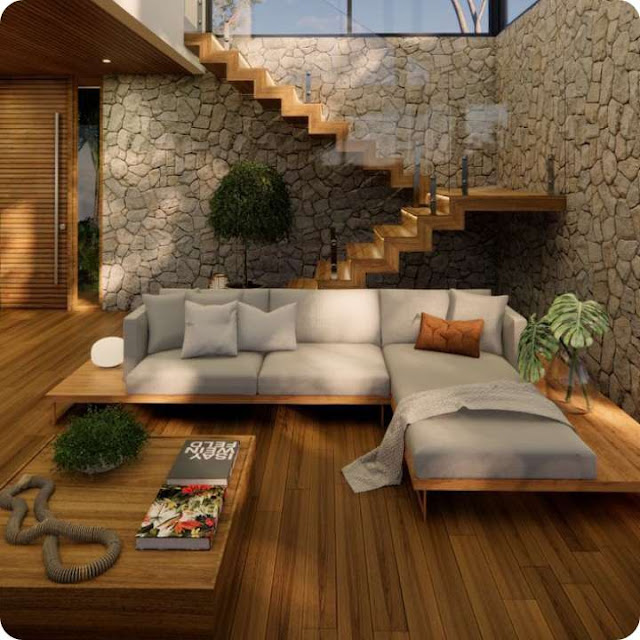World Interiors - Exploration and Its Global Influence
In a world where boundaries blur and cultures intermingle, interior design serves as a captivating lens through which to explore the rich tapestry of global cultures. From the serene minimalism of Japanese interiors to the opulent grandeur of European palaces, each corner of the world offers a unique perspective on how space can be adorned and inhabited. This article embarks on a journey through the diverse landscapes of world interiors, uncovering the stories and traditions woven into each design choice.
Traditional Interiors Around the Globe
Asian Aesthetics
Asia's vast and varied cultural landscape is reflected in its interior design traditions. From the zen-inspired simplicity of Japanese tatami rooms to the intricate motifs adorning Indian palaces, each style speaks volumes about its respective heritage. In Japan, the concept of wabi-sabi celebrates imperfection and impermanence, leading to spaces characterized by natural materials and understated elegance. Meanwhile, in China, the harmony of yin and yang is expressed through balanced compositions and symbolism-rich decor.
European Elegance
Europe's long history of artistic innovation has left an indelible mark on its interior design styles. From the lavish chateaus of France to the rustic villas of Italy, each region boasts its own distinctive aesthetic. French interiors exude sophistication and refinement, with ornate furnishings and gilded accents evoking a sense of timeless luxury. In contrast, Scandinavian design embraces simplicity and functionality, prioritizing clean lines and natural light to create spaces that are both cozy and contemporary.
African Influences
The diverse cultures of Africa offer a wealth of inspiration for interior designers seeking to infuse their spaces with warmth and vitality. From the earthy textures of Moroccan riads to the vibrant colors of South African townships, African design celebrates the richness of the continent's landscapes and traditions. Traditional materials such as mud cloth, rattan, and cowhide are often used to create tactile and visually striking interiors that reflect the spirit of the local communities.
Modern Interpretations and Fusion
Contemporary Global Fusion
In an increasingly interconnected world, designers are drawing inspiration from a wide range of cultural influences to create spaces that transcend geographical boundaries. The rise of global fusion design has led to a blending of traditional elements with modern aesthetics, resulting in interiors that are both eclectic and harmonious. By incorporating pieces from different cultures and time periods, designers are able to create spaces that tell a story and evoke a sense of wanderlust.
Cultural Integration in Urban Spaces
Cities are melting pots of culture, where people from diverse backgrounds come together to live, work, and play. As such, urban interiors often reflect a fusion of different cultural influences, resulting in spaces that are vibrant and dynamic. From street art murals that celebrate local heritage to restaurants that serve up fusion cuisine, cities offer endless opportunities for cultural exploration and exchange. By embracing diversity in their design choices, urbanites can create spaces that are truly reflective of the global community.
Case Studies and Inspirations
Showcase of Notable World Interiors
From the iconic interiors of luxury hotels to the quaint charm of boutique cafes, the world is full of inspiring spaces that showcase the diversity of cultural expression. In Tokyo, the Aman Tokyo hotel seamlessly blends traditional Japanese design elements with contemporary luxury to create a serene oasis in the heart of the bustling metropolis. Meanwhile, in Marrakech, the La Mamounia hotel is a testament to the opulence and grandeur of Moroccan architecture, with its intricately tiled courtyards and lush gardens.
Inspirational Design Concepts
For those looking to infuse their own spaces with a touch of global flair, there are countless ways to incorporate elements of world design into their interiors. Whether it's through the use of textiles, artwork, or furniture, incorporating pieces from different cultures can add depth and personality to any room. From handwoven rugs that bring warmth and texture to a space to statement lighting fixtures that serve as conversation starters, the possibilities are endless.
The Impact of Globalization on Interior Design
In an age of globalization, the boundaries between cultures are becoming increasingly fluid, leading to a blending of design styles and influences. Social media and the internet have played a significant role in this phenomenon, allowing designers and enthusiasts to connect and share ideas across geographical divides. As a result, interior design has become more inclusive and diverse, with designers drawing inspiration from a wide range of cultural sources. However, this globalization also raises questions about cultural appropriation and authenticity, prompting designers to approach cross-cultural exchange with sensitivity and respect.
In conclusion, world interiors offer a fascinating glimpse into the diverse cultures and traditions that shape our global community. By exploring the rich tapestry of design styles from around the world, we gain a deeper understanding of the stories and values that unite us as human beings. Whether it's through traditional craftsmanship, contemporary innovation, or cross-cultural fusion, interior design has the power to transcend borders and foster connections across cultures. As we continue to navigate an increasingly interconnected world, let us celebrate the beauty and diversity of world interiors and the rich tapestry of human creativity they represent.
